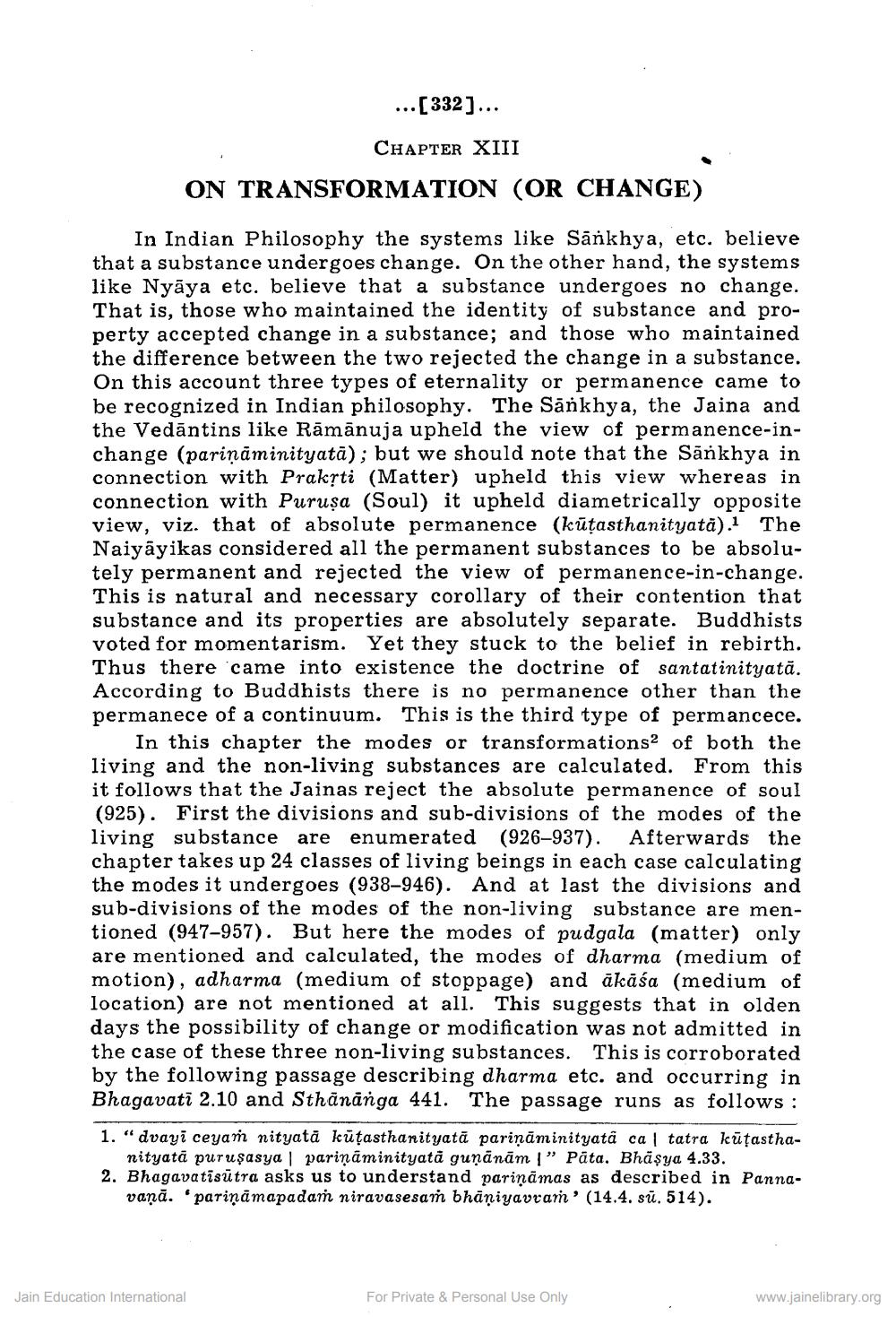________________
... [332]... CHAPTER XIII
ON TRANSFORMATION (OR CHANGE)
In Indian Philosophy the systems like Sankhya, etc. believe that a substance undergoes change. On the other hand, the systems like Nyāya etc. believe that a substance undergoes no change. That is, those who maintained the identity of substance and property accepted change in a substance; and those who maintained. the difference between the two rejected the change in a substance. On this account three types of eternality or permanence came to be recognized in Indian philosophy. The Sankhya, the Jaina and the Vedantins like Rāmānuja upheld the view of permanence-inchange (pariņāminityatā); but we should note that the Sankhya in connection with Prakṛti (Matter) upheld this view whereas in connection with Puruşa (Soul) it upheld diametrically opposite view, viz. that of absolute permanence (kuṭasthanityata). The Naiyayikas considered all the permanent substances to be absolutely permanent and rejected the view of permanence-in-change. This is natural and necessary corollary of their contention that substance and its properties are absolutely separate. Buddhists voted for momentarism. Yet they stuck to the belief in rebirth. Thus there came into existence the doctrine of santatinityată. According to Buddhists there is no permanence other than the permanece of a continuum. This is the third type of permancece.
In this chapter the modes or transformations2 of both the living and the non-living substances are calculated. From this it follows that the Jainas reject the absolute permanence of soul (925). First the divisions and sub-divisions of the modes of the living substance are enumerated (926-937). Afterwards the chapter takes up 24 classes of living beings in each case calculating the modes it undergoes (938-946). And at last the divisions and sub-divisions of the modes of the non-living substance are mentioned (947-957). But here the modes of pudgala (matter) only are mentioned and calculated, the modes of dharma (medium of motion), adharma (medium of stoppage) and ākāśa (medium of location) are not mentioned at all. This suggests that in olden days the possibility of change or modification was not admitted in the case of these three non-living substances. This is corroborated by the following passage describing dharma etc. and occurring in Bhagavati 2.10 and Sthānanga 441. The passage runs as follows:
1. "dvayi ceyam nityatā kuṭasthanityată pariņāminityata ca | tatra kuṭasthanityata purusasya | pariņāminityatā guṇānām " Pāta. Bhasya 4.33. 2. Bhagavatisūtra asks us to understand pariņāmas as described in Pannavaṇā. 'pariņāmapadaṁ niravasesaṁ bhāṇiyavraṁ' (14.4. sū. 514).
Jain Education International
For Private & Personal Use Only
www.jainelibrary.org




